Automatisch generierte Übersetzung
Original anzeigen
Übersetzung anzeigen
Santo Alligo was born in 1948 in Roccalumera (ME). At 5, his family moved to Turin. After graduating from the Civic School of Ceramic Art becomes the assistant of the ceramist Anna Maria Carusi, where it helps her to create great patinated terracotta bas -reliefs. At sixteen he was employed as a graphic/illustrator at the Armando Testa advertising study, where he created, in 1967, the Hippopotamus Pippo for the carousels of the Lines diapers. In his short essay, Manuel Carrera, historian and art critic, writes: “Among the absolute protagonists of the Carosello born in the context of the head of the Testa, Pippo, the hippopotamus of the Lines, still remains one of the most memorable, at the point To be shaved the myth. To create it was a very young and talented Saint Alligo, then fresh from training between the Civic School of Art Ceramo and the study of Anna Maria Carusi. The realization of Pippo fits fully into his artistic process and can be defined as his first important experience as a contemporary sculptor [...] of Pippo, however, in addition to the image, remains an unparalleled liveliness, a freshness of contents that is the happy and imprisonment fruit of the creativity of Santo Alligo ". Graphic designer and advertising illustrator, works for important Italian agencies and industries, from Ferrero to Esselunga, from San Pellegrino to Levi's. Create images in which he combines his idea and technical expertise, such as Facconi and Trisapore, by Federico Zeri judged "beautiful, indeed, sometimes splendid inventions", as in some posters: World Cup of Fencing of Turin, the Antiquar Association of Italy, Turin Calcio.
Since 1966 he began to model terracotta portraits characterized by introspective adhesion to the model, which represent, as Adriano Olivieri wrote, the production most intimately linked to the sensitivity of Alligo. This small corpus of works born in the sixties-seventies-with eyes wet at the sources of Arturo Martini and Gemito, long observed at the Museum of Civic Art of Turin-has something surprising in the way of guessing the tire that is erect Leather in the subjects to whom we imagine is missing the time to come true that we have already been translated into Crete. In an instant Alligo captures the life of the person and returns it to a rough man, modeled in a rustic way and which reaches a penetrating truth close to the veristic lining of the Etruscans and the Romans; Not to art born from an aesthetic ideal as in the Greeks but by reality as in the Latins. Exemplary in this sense are: the portrait of Pietro of 1975, with the gaze that pierces us and the languid eyelids that we find in certain faces of the Antonini lineage, that of Nino Vera as true are some faces of emperors who look like peasants of the Lazio Maremma , that of Mother Paola, an authentic Mater matter, or an- cum of his wife Mariolina, blocked in a seal of symmetrical beauty. Some sculptures depicting commonly used objects are of the late eighties: from Lacoste to the wool sweater, which Vittorio Sgarbi considers "sculptures that speak ... eternal objects with the soul".
The sculptures of Alligo (rigorously unique pieces) have been exhibited in numerous collective and personal: Terrecotte, Turin 2014; Anthological 1960/2014, Rome; Plastics urgencies, 2014/15, Milan; The Fringe of the Art World, 2017, Turin. The work "Sunday". Finally! He was exhibited at the 2015 Milan Expo in 2010. In 2010 he received the "Il Dream di Piero" Award for his artistic activity in the field of graphics, sculpture and for his passionate research and dissemination from the Academy of Fine Arts of Urbino in Urbino on the masters of illustration.
“Santo Alligo, although it is largely referring to the language of traditional figurative plastic, is perfectly contemporary artist. And it is contemporary as "personality", as a character, or as a person, meaning the term to Latin, in a stage sense. Alligo - we must underline it - is a natural character, animated by a special naiveté: at times boyish, at times sulphurous. His springs, without constructions and artifices is also natural; without sophistications and sophistications. You cannot fully know the work of Santo if your person is unknown, characterized by an impulsive theatricality, frank, frenetic. Also the heterogeneous intellectual dimension of Alligo, which betrays an irrepressible eclectic nature, is essential to understand the different joints of his sculpture, in which they come together with candid ease of Sicelioti archaisms, love apologized for illustration, comic and advertising suggestions , cinephile and bi-bilophile quotes, amused taste for the unsettling or provocative gimmick. His last exhibition presents a generous flower of terracotta, bronze, aluminum and wood works (sometimes with interventions in resins and plexiglas), made by the artist starting from the late seventies, with a specific focus on the unpublished production of the last three years. In the latest works Alligo has touched all the expressive strings that have always distinguished his agitated poetic universe, who came to an ideal synthesis of his conceptual and visual codes: from the laconic death of a chick to the surreal digital portrait, from the alienating reflection to the " Sunday". Finally! from the diptych to remain a child to the spectacular invisible man, from the superb bust in ignored terracotta and iron wire borders spined (loading of political-social implications) to the most enig- but a very complex bronze, suspended between ironic detachment and mystery Existential ... from the extraordinarily capable of saint every matter comes to life, in a continuous and compulsive dialectic that knows no re -rivers. We have already observed elsewhere how relevant the polymateric inclination of the latest creations of Alligo is, framing it in a speech of imitation of the reality already underway in the early nineties, without neglecting the projective scope of the aforementioned inclination, capricious reflection of a distant infantile desire for amazement and polymorphic enjoyment. (Armando Audoli).
Lately he was called to create a work to decorate a building in Turin; from the name of the stable "link", it created large aluminum panels cut into waterjet.
Since 1985 he has participated in numerous collectives including:
- from Tiziano to De Chirico. The search for identity, Palermo, Ascoli Piceno, Cagliari 2003/04;
- The Boom years, from reconstruction to the dispute. Art in Piedmont from 1946 to 1968, Bra 2012;
- The game in art & of art. Art in Piedmont from the twentieth century to today, Bra 2013;
- contrasts, Turin, 2013;
- Artists of Sicily, Favignana, Palermo 2014;
- The Treasury of Italy, Expo Milano 2015;
- Expo Italian Art, Varedo 2015;
- from Giotto to De Chirico. The hidden treasures, Salò 2016;
- New proposals, Galleria il Ponte, Turin, 2017
Opera accompanied by authentic on photos signed by the artist
Santo Alligo wurde 1948 in Roccalumera (ME) geboren. Bei 5, zog seine Familie nach Turin. Nach seinem Abschluss an der Städtischen Schule für Keramik wird er Assistent der Keramikerin Anna Maria Carusi, wo er ihr hilft, große patinierte Terrakotta-Basreliefs zu schaffen. Mit sechzehn Jahren wird er als Grafiker/Illustrator in der Werbestudie von Armando Testa angestellt, wo er 1967 das Nilpferd Pippo für die Karussells der Lines-Windeln kreiert. In seinem kurzen Essay schreibt Manuel Carrera, Historiker und Kunstkritiker: "Unter den absoluten Protagonisten des Carosello, die im Zusammenhang mit dem Kopf der Testa geboren wurden, bleibt Pippo, das Nilpferd der Lines, immer noch einer der denkwürdigsten, an dem Punkt, an dem der Mythos rasiert wird. Um es zu schaffen, war eine sehr junge und talentierte Saint Alligo, dann frisch aus der Ausbildung zwischen der Civic School of Art Ceramo und der Studie von Anna Maria Carusi. Die Realisierung von Pippo fügt sich voll und ganz in seinen künstlerischen Prozess ein und kann als seine erste wichtige Erfahrung als zeitgenössischer Bildhauer definiert werden [...] von Pippo bleibt jedoch, zusätzlich zum Bild, eine unvergleichliche Lebendigkeit, eine inhaltliche Frische, die die glückliche und gefangene Frucht der Kreativität von Santo Alligo ist ". Grafikdesigner und Werbeillustrator, arbeitet für wichtige italienische Agenturen und Industrien, von Ferrero bis Esselunga, von San Pellegrino bis Levi's. Er kreiert Bilder, in denen er seine Idee und sein technisches Fachwissen vereint, wie z.B. Facconi und Trisapore, von Federico Zeri als "schöne, ja, manchmal großartige Erfindungen" beurteilt, wie auf einigen Plakaten: World Cup of Fencing of Turin, der Antiquar Association of Italy, Turin Calcio.
Seit 1966 begann er, Terrakotta-Porträts zu modellieren, die sich durch eine introspektive Anhaftung an das Modell auszeichnen und die, wie Adriano Olivieri schrieb, die Produktion darstellen, die am engsten mit der Sensibilität von Alligo verbunden ist. Dieser kleine Korpus von Werken in den sechziger-siebziger Jahren geboren - mit feuchten Augen an den Quellen von Arturo Martini und Gemito, lange beobachtet im Museum für Stadtkunst von Turin - hat etwas Überraschendes in der Art und Weise des Erratens der Reifen, die aufrecht ist Leder in den Themen, denen wir uns vorstellen, fehlt die Zeit, um wahr zu werden, dass wir bereits in Kreta übersetzt worden sind. In einem Augenblick fängt Alligo das Leben der Person ein und gibt es einem rauen Mann zurück, der auf rustikale Weise modelliert ist und eine durchdringende Wahrheit erreicht, die dem veristischen Futter der Etrusker und der Römer nahe kommt; nicht zu einer Kunst, die aus einem ästhetischen Ideal geboren ist wie bei den Griechen, sondern durch die Realität wie bei den Lateinern. Exemplarisch in diesem Sinne sind: das Porträt von Pietro von 1975, mit dem Blick, der uns durchdringt und die schmachtenden Augenlider, die wir in bestimmten Gesichtern der Antonini Linie finden, das von Nino Vera, wie wahr sind einige Gesichter von Kaisern, die wie Bauern der Lazio Maremma aussehen, das von Mutter Paola, eine authentische Mater Mater, oder an- cum seiner Frau Mariolina, blockiert in einem Siegel von symmetrischer Schönheit. Einige Skulpturen, die alltägliche Gegenstände darstellen, stammen aus den späten achtziger Jahren: von Lacoste bis zum Wollpullover, den Vittorio Sgarbi als "Skulpturen, die sprechen ... ewige Gegenstände mit Seele" bezeichnet.
Die Skulpturen von Alligo (rigorose Einzelstücke) wurden in zahlreichen kollektiven und persönlichen Ausstellungen gezeigt: Terrecotte, Turin 2014; Anthological 1960/2014, Rom; Plastische Dringlichkeiten, 2014/15, Mailand; The Fringe of the Art World, 2017, Turin. Das Werk "Sunday". Endlich! Er wurde auf der Expo 2015 in Mailand ausgestellt. 2010 erhielt er den Preis "Il Dream di Piero" für seine künstlerische Tätigkeit im Bereich der Grafik, der Bildhauerei und für seine leidenschaftliche Forschung und Verbreitung von der Akademie der Schönen Künste von Urbino in Urbino über die Meister der Illustration.
"Santo Alligo, obwohl er sich weitgehend auf die Sprache der traditionellen figurativen Plastik bezieht, ist ein vollkommen zeitgenössischer Künstler. Und er ist zeitgenössisch als "Persönlichkeit", als Charakter oder als Person, was der Begriff auf Lateinisch bedeutet, in einem bühnenhaften Sinn. Alligo - das muss man betonen - ist ein natürlicher Charakter, beseelt von einer besonderen Naivität: mal knabenhaft, mal schweflig. Seine Quellen, ohne Konstruktionen und Kunstgriffe, sind ebenfalls natürlich, ohne Spitzfindigkeiten und Raffinessen. Man kann das Werk von Santo nicht vollständig kennen, wenn man seine Person nicht kennt, die von einer impulsiven Theatralik, offen und frenetisch ist. Auch die heterogene intellektuelle Dimension von Alligo, die eine unbändige eklektische Natur verrät, ist wesentlich, um die verschiedenen Gelenke seiner Skulpturen zu verstehen, in denen sie mit offener Leichtigkeit sizilianische Archaismen, Liebe, die sich für Illustration entschuldigt, Comic- und Werbeanregungen, cinephile und bi-bilophile Zitate, amüsierte Vorliebe für den beunruhigenden oder provokativen Gimmick zusammenkommen. Seine letzte Ausstellung präsentiert eine großzügige Auswahl an Terrakotta-, Bronze-, Aluminium- und Holzarbeiten (manchmal mit Eingriffen in Harz und Plexiglas), die der Künstler seit den späten siebziger Jahren geschaffen hat, wobei ein besonderer Schwerpunkt auf der unveröffentlichten Produktion der letzten drei Jahre liegt. In den letzten Werken hat Alligo alle expressiven Saiten berührt, die schon immer sein aufgewühltes poetisches Universum auszeichneten, und ist zu einer idealen Synthese seiner konzeptuellen und visuellen Codes gelangt: vom lakonischen Tod eines Kükens zum surrealen digitalen Porträt, von der verfremdenden Reflexion zum "Sonntag". Schließlich! von dem Diptychon ein Kind zu bleiben, um die spektakuläre unsichtbaren Mann, von der herrlichen Büste in ignoriert Terrakotta und Eisendraht Grenzen gespickt (Laden von politisch-sozialen Implikationen) zu den enig-, sondern eine sehr komplexe Bronze, zwischen ironischen Distanz und Geheimnis Existentielle suspendiert ... von der außerordentlich fähig Heilige jede Angelegenheit zum Leben kommt, in einer kontinuierlichen und zwanghaften Dialektik, die keine re -rivers kennt. Wir haben bereits an anderer Stelle festgestellt, wie relevant die polymaterielle Neigung der jüngsten Kreationen von Alligo ist, die sie in eine Rede der Nachahmung der Realität einrahmt, die bereits in den frühen neunziger Jahren im Gange war, ohne die projektive Reichweite der genannten Neigung zu vernachlässigen, kapriziöse Reflexion eines entfernten infantilen Wunsches nach Erstaunen und polymorphem Vergnügen. (Armando Audoli).
Kürzlich wurde er gerufen, um ein Werk zu schaffen, um ein Gebäude in Turin zu schmücken; aus dem Namen des Stalles "Link", schuf er große Aluminiumplatten in Wasserstrahl geschnitten.
Seit 1985 hat er in zahlreichen Kollektiven teilgenommen, darunter:
- von Tiziano bis De Chirico. Die Suche nach Identität, Palermo, Ascoli Piceno, Cagliari 2003/04;
- Die Boomjahre, vom Wiederaufbau bis zum Streit. Kunst im Piemont von 1946 bis 1968, Bra 2012;
- Das Spiel in der Kunst & der Kunst. Kunst im Piemont vom zwanzigsten Jahrhundert bis heute, Bra 2013;
- kontraste, Turin, 2013;
- Künstler aus Sizilien, Favignana, Palermo 2014;
- Die Schatzkammer Italiens, Expo Mailand 2015;
- Expo Italienische Kunst, Varedo 2015;
- von Giotto bis De Chirico. Die verborgenen Schätze, Salò 2016;
- Neue Vorschläge, Galleria il Ponte, Turin, 2017
Oper begleitet von authentischen, vom Künstler signierten Fotos

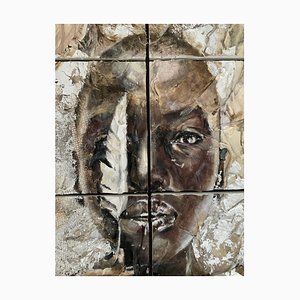


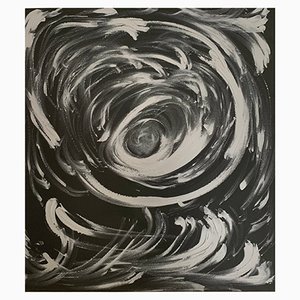
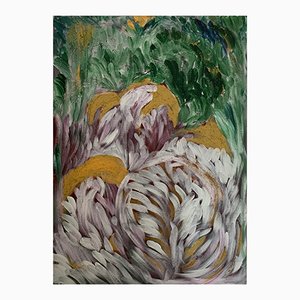
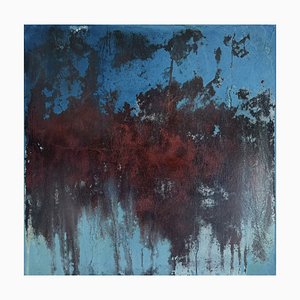
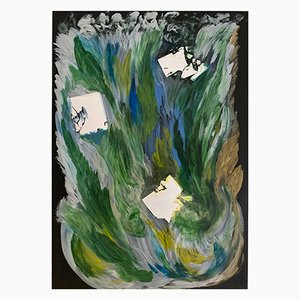
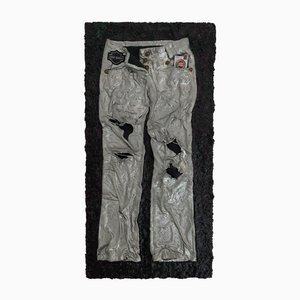
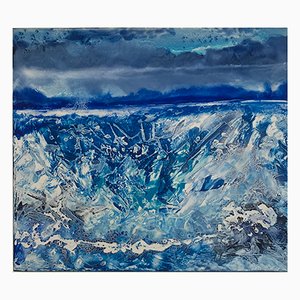
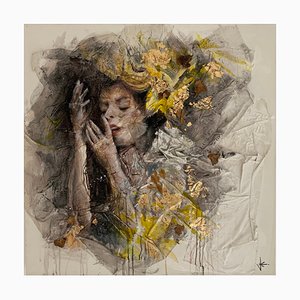
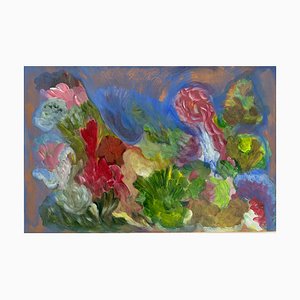
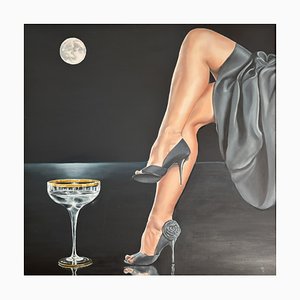

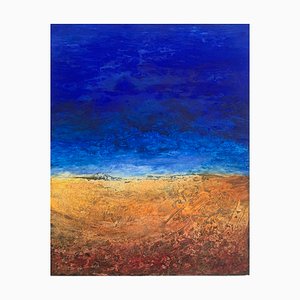

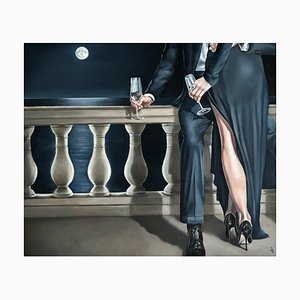



Schreiben Sie uns
Ein Angebot machen
Uns ist aufgefallen, dass Sie neu bei Pamono sind!
Bitte akzeptieren Sie die Allgemeinen Geschäftsbedingungen und die Datenschutzerklärung
Schreiben Sie uns
Ein Angebot machen
Fast geschafft!
Um die Kommunikation einsehen und verfolgen zu können, schließen Sie bitte Ihre Registrierung ab. Um mit Ihrem Angebot auf der Plattform fortzufahren, schließen Sie bitte die Registrierung ab.Erfolgreich
Vielen Dank für Ihre Anfrage! Unser Team meldet sich in Kürze bei Ihnen zurück.
Wenn Sie Architekt*in oder Inneneinrichter*in sind, bewerben Sie sich hier um dem Trage Program beizutreten.